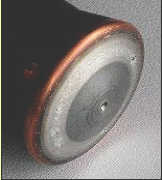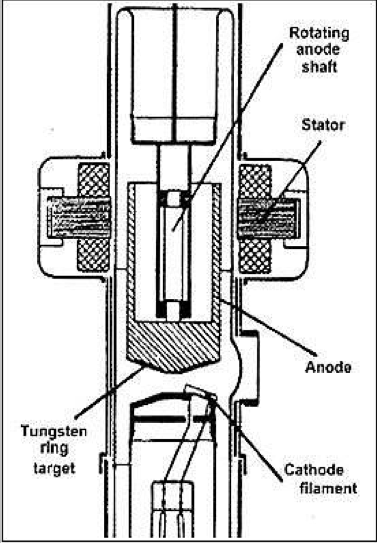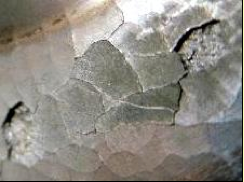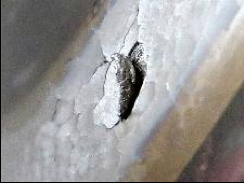“CRT” Early Rotating Anode Tube by G.E.
Ref. K1








This tube, 12” (30 cm)long, dates to the late thirties or early forties, but in spite of its “modern” shape, and of the most recent patent date of 1938, (and although Siemens had already introduced the first “disc” anode in its PANTIX tube in 1933), its internal design is of an archaic type and seems inspired from the first rotating anode tubeby Philips, the ROTALIX, introduced in the late twenties, where the rotating anode is a copper cylinder tipped with a tungsten ring as a target (see the drawing left).
In this tube the slightly conical tungsten target disc measuring 2” (5 cm) in diameter is embedded in a heavy copper mass acting as a heat sink. It shows serious cracks with evident peeling in certain areas (see pictures below).. Note also the presence of two filaments corresponding to the large and small focal spots on the target.
The pictures show the anode and cathode structures from a similar tube that did not withstand transport, as well as a comparison of the massive and heavy (4 lbs) cylindrical rotating anode of this tube to a disc type rotating anode of a more recent G.E. tube.